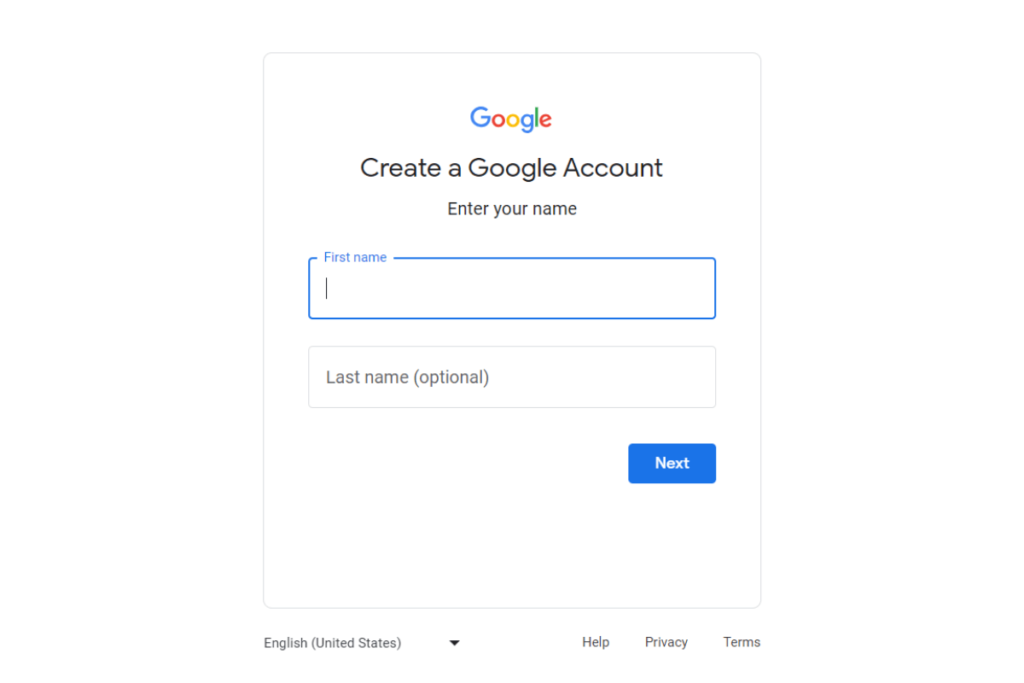If you’re an Australian marketer, learning how to leverage paid ads is often the first place you should look when it comes to reaching new clients. Google’s platform offers a wide variety of tools and options that, if used correctly, can increase your conversion rates and drive meaningful results. If you’re new to starting a Google Ads Campaign, we’re proud to offer a free, comprehensive “Google Ads Campaign Checklist” full of essential tips to help guide your strategy.
Requirements for Your First Google Ads Campaign
Google Account
Before you can even get started creating and promoting your ads, you first have to ensure that you have the basic structure in place. That means setting up your Google Account. Having a Google Account opens the door to many different Google services, including Google Ads.

Website and Landing Pages
Google Ads work best when they’re directed toward specific landing pages on your website. Before you launch your ads, make sure that your website loads fast, is mobile-responsive and has relevant landing pages with clear and actionable calls-to-action. Otherwise, if you’re just directing traffic to your website’s homepage, you’re needlessly wasting money and your ads will receive a lower quality score because the pages aren’t as tailored as they could be to your visitor’s specific needs.
Billing Details
When you set up Google Ads, you’ll be asked to provide your billing information. Your Google Ads bidding strategies will pull from the pool of money you’ve set aside to be able to bid on specific keywords, so make sure your billing details are up-to-date to avoid any interruptions in service.
Once you have your account set up, it’s time to move on to creating the campaign itself.
How to Choose a Campaign Objective for Google Ads
The core of Google Ads is the campaign, and every campaign must have a purpose. This is known as “Google Ads Objectives”. Google offers you numerous campaign objectives that can match your needs, including:
- Sales: Drive more online or in-store sales
- Leads: Collect prospective customer details
- Website traffic: Get more visitors to your website
- Product and Brand Consideration: Get more people to explore your products or services
This is by no means an exhaustive list. There are many other objectives including things like app downloads or in-store traffic that you can measure.
When deciding on your objective, think about what your business currently needs. If you’re a new business, for example, brand consideration might work better than website traffic. Take a look at your sales funnel and ask yourself where the majority of your customers are in the buying process. Are they still getting to know you? Or do they just need a gentle nudge to convert?
If you’ve run Google Ads in the past, look back at their previous performance. Which objectives gave you the best ROI? Which ones underperformed? If you’re not starting with a blank slate, historical data can bring you valuable insights on what worked and what didn’t.
You’ll also want to consider your budget depending on your objectives. Some of them, like brand awareness, may need a larger budget since you want high visibility and broader reach. Campaigns more focused on leads or sales might require more precise, targeted, high-converting ad placements, so it’s important to consider the objectives behind the results you want to achieve.
And above all, don’t be afraid to test different objectives. That’s the beauty of a system like Google Ads: you have the flexibility to pivot quickly based on what the real-time performance data is telling you, and without wasting money in the process. See what resonates most with your target audience.

Organising Your Google Ads Campaign
Whether you’re creating your first campaign or you’re looking to launch several, it’s imperative that you organise your campaign to save yourself a lot of headaches and hassle later. Although this is a “learn Google Ads checklist”, it’s important to familiarise yourself with Google official guidelines.
In order to organise your Google Ads campaign, it’s important to start with a solid foundation:
Define Your Google Ads Campaign Goals
Before you even launch your first campaign, you have to outline what you want to achieve, whether that’s getting new leads, more sales or more traffic to your website. This, in turn, will drive your strategy. Here’s how to set your campaign goals:
Segment Your Ads
Organise your ads into specific ad groups based on keywords or themes. Not only does this help you better target your advertising, but it also helps you optimise your ads as you continue to refine them to more accurately target your audience.
Make Ample Use of Extensions
Using Google Ads Extensions is a smart way to put lots of relevant information in an ad and make it more helpful for your searchers. Google Ad Extensions are additional pieces of information such as phone numbers, links or ratings that help to make your ad more compelling.
Keywords
One of the most important facets of your Google Ads are your keywords. By researching and listing relevant keywords, you’ll be able to increase the odds that your ads will appear in the search results for your chosen words or phrases. You can use Google’s own Keyword Planner Tool to help you determine the competition levels with keywords within Australia.
In many cases you’ll find that broad terms are quite costly, so it may be better to focus on more “long tail” keywords with more precise search intent.
Understanding Your KPIs
KPIs or “Key Performance Indicators” are the metrics that are used to measure the performance of your Google Ad campaign. The most common Google Ads KPIs include:
Click-Through Rate (CTR) – The percentage of clicks your ad receives out of the total number of times your ad was shown.
Conversion Rate: The percentage of clicks that resulted in the action you wanted (such as a sales or a sign up)
Quality Score: Google’s own scoring of your ads based on the relevance of your keywords, the quality of your landing page and the CTR.
Cost Per Click (CPC) – How much you pay each time someone clicks on your ad.
Return on Ad Spend (ROAS) – The revenue generated for every dollar spent on your ads.
Keep in mind that not every KPI will be relevant for every campaign. For example, if your goal is more brand awareness, you might focus on impressions and CTR over conversion rate.
It’s also important to compare your KPIs against industry standards. This gives you a baseline with which you can measure your ad success and campaign performance to that of your competitors and improve areas for improvement.
Advanced Strategies for Google Ads Optimisation
Google Ads targeting lets you do more than just the basics profiled here in our checklist. With a little advanced knowhow or an Australian Google Ads expert on your side, you can delve much deeper into more advanced optimisation strategies such as:
Regularly Review and Tweak Your Ad Campaigns
Setting up Google Ad campaigns is not a “once and done” task. It’s an ongoing process that involves monitoring the performance of your ads and regularly tweaking and updating your ad campaigns to more closely match what your ideal customer is searching for. Failing to regularly review and edit your ad campaigns can cause you to waste money unnecessarily, so be sure to check your campaigns often and make changes based on what the analytics tell you.
Set Up Google Ads Advanced Features
Beyond setting up and organising your campaigns, Google Ads also offers many advanced features you can delve into, including Remarketing Lists for Search Ads (RLSA) and Dynamic Search Ads (DSA) which give your ads better reach and personalisation.
Learn Advanced Google Ads Bidding Strategies
In addition to more advanced features within Google Ads themselves, there are also more advanced bidding strategies that you can test out to see how they affect your ad performance. For example, there’s the well-known cost per click (CPC) strategy where you pay every time someone clicks your ad, but there are also strategies like cost per acquisition (CPA) where you pay only if that person becomes a customer, or Return on Ad Spend (ROAS) bidding which uses AI to analyse and predict the value of a potential conversion every time a user searches for your product or service.
Zero In on Advanced Google Ads Targeting
Last, but certainly not least, there are ways to go beyond Google Ads’ basic demographic targeting. You can do a deep dive into audience interests, their past online behaviour and even certain life events to make your ads more compelling and relevant to them.
You’ve Got a Checklist, Now What?
Now that you have a thorough Google Ads campaign checklist with actionable steps you can take to start creating campaigns, measuring their performance and seeing results, what’s the next step? If it all seems a little overwhelming, you can always reach out to a certified Google Ads expert in Australia to help you optimise your search and paid ad campaigns and take on managing and optimising your campaigns while freeing up more of your time to do the things you enjoy in your business.
At the same time, if you’d rather tackle it all yourself, following this checklist can help you navigate the world of Google Ads with more confidence and clarity. Be sure that if you do decide to manage it all on your own, that you regularly revisit your strategy and learn from your performance metrics. People’s tastes and even their search habits can and do change over time so it’s important to keep that in mind as you gauge how well your campaigns are doing.




